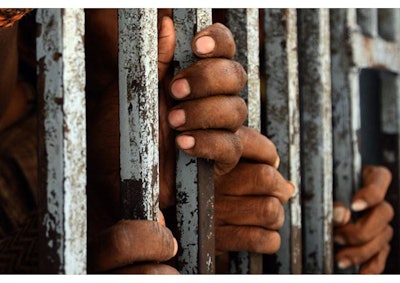As Congress’s stimulus package heads to the president’s desk for signing, the legislation has major implications for students in prison.
Notably, the bill pushed forward on Dec. 21 moves to end a 26-year ban on Pell grants for incarcerated students, a major victory for students and their advocates after years of activism.
The reversal “will increase access to opportunity for people leaving prison, in terms of their career paths and their ability to take care of themselves and their families post-release,” said Margaret diZerega, who directs the Center on Sentencing and Corrections at the Vera Institute of Justice, a nonprofit for criminal justice reform. “Really it’s an equity issue also, given the disproportionate number of Black and brown people in prison.”
In recent years, restoring Pell grants to incarcerated students has enjoyed rare bipartisan support. The Second Chance Pell Experiment – a pilot program allowing some incarcerated students to access Pell grant funding – began under former President Barack Obama and expanded under President Donald J. Trump.
Thanks to the program, “there are more members of Congress who are interacting with the colleges, the corrections departments and the students in these programs,” diZerega said. “We saw several members attend graduations in prisons or go visit prison programs. And I think being proximate to the students and the faculty and the corrections staff that make these programs possible, people see how transformative they are.”
Historically, incarcerated students lost access to Pell grants as a part of the 1994 crime bill. The legislation wasn’t only a hit to college affordability for students in prison. It also cut down their options for higher education programs.
Without federal funding toward tuition, “the drop in the availability of college programs in prison was dramatic,” said Dr. Bradley Custer, senior policy analyst for postsecondary education for the Center for American Progress, a left-wing think tank. The programs that persisted found other sources of funding – like private funds or state funds – but now “we have this opportunity to have a steady, secure stream of federal funding that students can rely on, just like non-incarcerated students with financial need can rely on.”
He expects to see more colleges and universities developing courses and degree programs for incarcerated students, and he praised the legislation for including standards to ensure students receive quality education options. For example, colleges have to be accredited private or public nonprofit institutions approved by the state and programs need to report data to the secretary of education, who in turn will report to Congress.
“This was not just a simple ‘let’s remove the ban,’” Custer said. “[These schools] have to be able to provide programs that lead to careers where students are not going to be denied licensure because of their criminal background. A lot of thought was put into which types of colleges and programs do we want offered in exchange for Pell dollars.”
The end of the Pell grant ban isn’t the only measure in the stimulus package that’ll benefit incarcerated students. It also removes a 1998 law that barred students with drug convictions from eligibility for financial aid, enforced through a question on the FAFSA. In 2006, Congress narrowed the law – and the FAFSA question – only temporarily removing financial aid from current students convicted of drug offenses. Still, the application question confused students and hundreds lose aid every year, either because of actual drug convictions or because they leave the question blank.
It was a “bit of a nightmare,” Custer said. “The new bill completely deletes that law. There’s no ifs, ands or buts about it anymore,” and the question will no longer appear on the FAFSA.
He pointed out that the measure isn’t perfect. Under the 1988 Anti-Drug Abuse Act, students convicted of drug offenses can still have federal benefits taken away from them, including student aid. That’s a hole that needs fixing, but he thinks “this helps a lot more people than it leaves behind.”
The bill also re-extends the Pell grant to those confined for psychiatric treatment for sexual offenses under state civil commitment laws. Before 2008, these students could use the Pell grant toward correspondence courses, where faculty could send reading and assignments to their facilities.
Meanwhile, some measures not specifically designed for incarcerated students will help them nonetheless, like shortening the FAFSA. Notably, the bill removes the question about whether applicants are registered for selective service, a known barrier for incarcerated students, who have a harder time registering or proving they’ve registered from prison, Custer noted.
Despite these inroads, advocates say the work of ensuring affordable higher education for students in prison is far from over.
DiZerega’s focus is now on ensuring “implementation goes well and that it happens with a sense of urgency,” she said, “because people in prison have been waiting a long time for this ban to be lifted,” she said. “We and others want to make sure they don’t have to wait any longer than necessary.”
For Custer, the next policy frontier is making state financial aid widely available to incarcerated students. Some states make aid accessible for students in prison, but others have different rules for different programs or bar incarcerated students from financial aid entirely. He hopes that’ll change now.
After the stimulus package, “it’s not a good look anymore,” he said. “Just like other students have to cobble together multiple forms of aid … we need all of those funding sources available to fully cover students in prison, especially because they still cannot get loans. We can’t just say, ‘hooray, we have Pell grants,’ and assume that that’s enough for everybody.”
Sara Weissman can be reached at [email protected].















